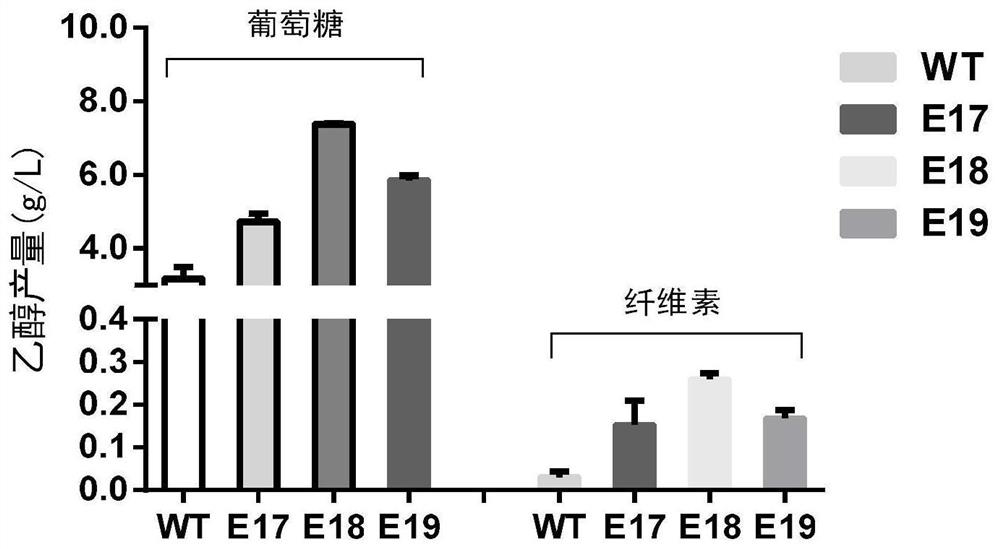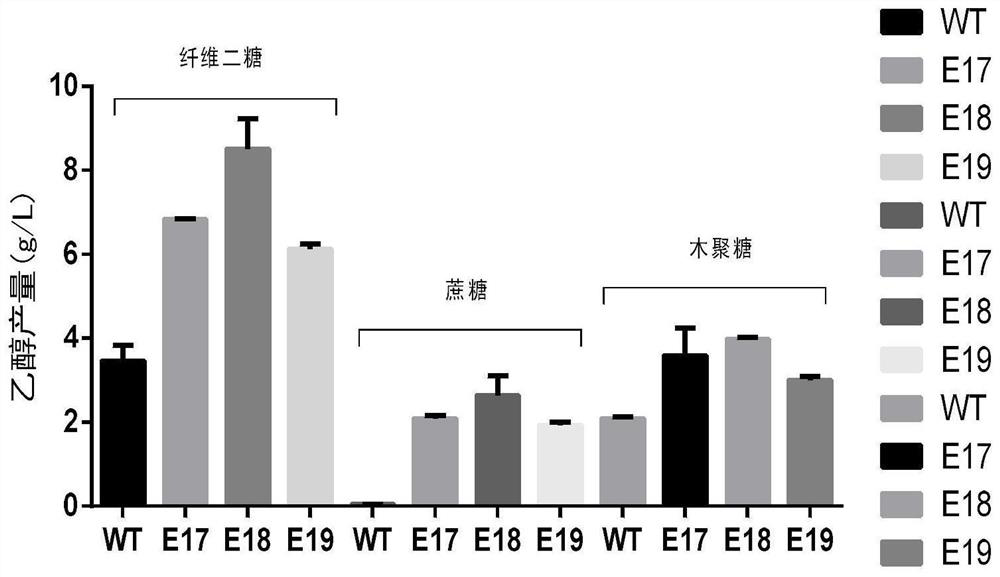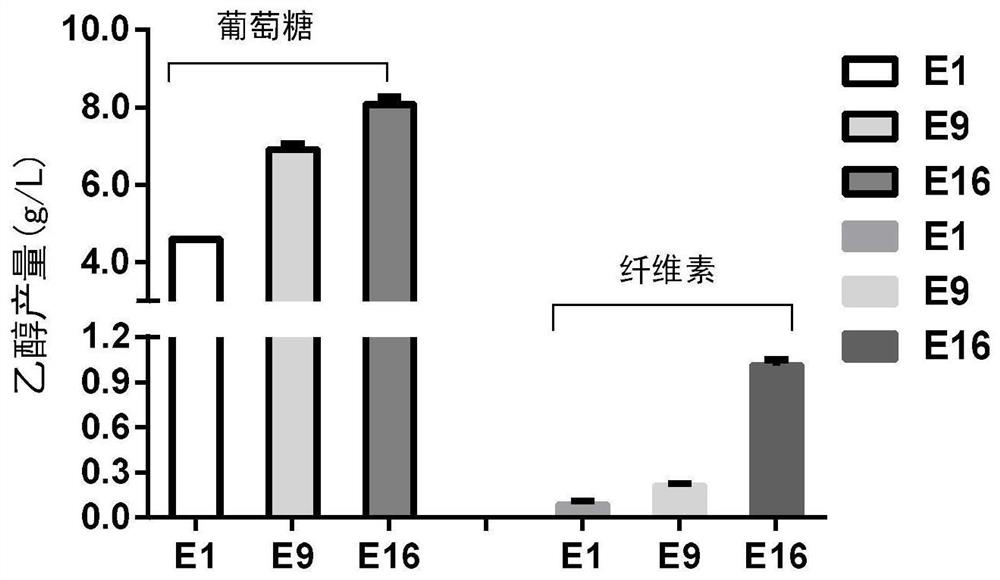Recombinant filamentous fungus for producing ethanol from phosphofructokinase 2 mutant, construction of recombinant filamentous fungus and application of recombinant filamentous fungus in ethanol production
A phosphofructokinase, filamentous fungus technology, applied in the fields of genetic engineering and biology, can solve the problems of low ethanol yield and slow metabolism rate of filamentous fungi, and achieve the effects of wide practical application prospects, reduction of production costs, and outstanding application potential.
- Summary
- Abstract
- Description
- Claims
- Application Information
AI Technical Summary
Problems solved by technology
Method used
Image
Examples
Embodiment 1
[0031] Example 1 Construction of sgRNA expression cassette and donor DNA for knocking out phosphofructokinase 2
[0032] First, in this example, the gene encoding phosphofructokinase 2 (phosphofructokinase2, PFK2, Mycth_71484) was knocked out, using the genome editing technology based on CRISPR / Cas9 (Qian Liu, et al. Development of a genome-editing CRISPR / Cas9 system in thermophilic fungal Myceliophthora species and its application to hyper-cellulase productionstrain engineering. Biotechnology for Biofuels, volume 10, Article number: 1 (2017)) to inactivate target genes. Wherein, the coding nucleotide sequence of PFK2 protein is shown in SEQ ID No.1. The amino acid sequence of the PFK2 protein is shown in SEQ ID No.2.
[0033] 1. Construction of sgRNA expression cassette
[0034] The protospacer of the target gene pfk2 (Mycth_71484) is designed by the software sgRNACas9 tool, which is the target site. The sequence sgRNA promoter, protospacer and scaffold were connected toge...
Embodiment 2
[0044] Construction of the phosphofructokinase 2 expression vector of embodiment 2 mutation
[0045]In this example, the mutation sites of phosphofructokinase 2 (PFK2, Mycth_71484) are: H233G, E306G, H371G. The mutation sites are selected based on their structural information. These three mutation sites are the key amino acids for the phosphatase activity of the enzyme. Through mutations, the phosphatase activity of phosphofructokinase 2 can be inactivated, while only the kinase activity is retained. The mutated nucleotide and amino acid sequences are shown in SEQ ID NO 6 and SEQ ID NO 7, respectively. Using the Myceliophthora thermophila genomic DNA as a template, the mutant pfk2 gene was amplified by fusion PCR. The specific operation is as follows: first, using genomic DNA as a template, four pairs of primers 71484mut-a and 71484mut-b, 71484mut-c and 71484mut-d, 71484mut-e and 71484mut-f, 71484mut-g and 71484mut-h were used to amplify The four fragments of the mutated pfk...
Embodiment 3
[0048] Example 3 Transformation DNA is introduced into Myceliophthora thermophila
[0049] Myceliophthora thermophila ATCC 42464 was inoculated in MM slant medium, and cultured at 45°C for 10 days before use. The formula of MM medium is: [50×Vogel’s salt 20mL, sucrose 20g, agar 15g, histidine (50mg / mL) 20mL, constant volume to 1L, autoclaved]. 50× Vogel’s salt (1L) recipe is: trisodium citrate (1 / 2H 2 O) 150g, anhydrous KH 2 PO 4 250g, anhydrous NH 4 NO 3 100g, MgSO 4 ·7H 2 O 10g, CaCl 2 2H 2 O 5g, trace element solution 5mL, biotin (0.1mg / mL) 2.5mL, constant volume to 1L. Trace element solution formula (100mL): 5g C 6 h 8 O·7H 2 O, 5g ZnSO 4 ·7H 2 O, 1g Fe(NH 4 ) 2 (SO 4 )·6H 2 O, 0.25g CuSO 4 ·5H 2 O, 0.05g MnSO 4 ·H 2 O, 0.05g H 3 BO 3 , 0.05g NaMoO 4 2H 2 O, dissolved in water, dilute to 100mL,
[0050] 1. Transformation of Myceliophthora thermophila protoplasts
[0051] 1) Mycelium preparation
[0052] Mature Myceliophthora thermophila spore...
PUM
 Login to View More
Login to View More Abstract
Description
Claims
Application Information
 Login to View More
Login to View More - R&D
- Intellectual Property
- Life Sciences
- Materials
- Tech Scout
- Unparalleled Data Quality
- Higher Quality Content
- 60% Fewer Hallucinations
Browse by: Latest US Patents, China's latest patents, Technical Efficacy Thesaurus, Application Domain, Technology Topic, Popular Technical Reports.
© 2025 PatSnap. All rights reserved.Legal|Privacy policy|Modern Slavery Act Transparency Statement|Sitemap|About US| Contact US: help@patsnap.com



